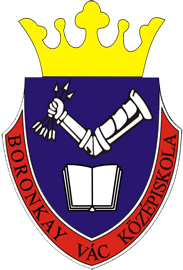 Main Page
Introduction
Articles
Gallery
Main Page
Introduction
Articles
Gallery

 Main Page
Introduction
Articles
Gallery
Main Page
Introduction
Articles
Gallery
The first step you have to take to build a CanSat is the planning. This includes things like deciding what your secondary mission will be, and a basic assignment of roles in the team. For the secondary mission the possibilities are pretty much endless, with the only limit being your own imagination. But you don't have to reinvent the weel if you don't want to, a simple but well executed (/effective) secondary mission can lead you to great success as well. This is the approach we took, because we had no one int the team who has deep knowledge of natural sciences, and two of us already had experience in trying to make a CanSat that is too complicated. Communication is a very important part of the planning process. While it is fine if you have some conflicting ideas, you must discuss them, and come to an agreement, because everybody following one bad plan is better than each of you following good, but different plans.
The first step you have to take to build a CanSat is the planning. This includes things like deciding what your secondary mission will be, and a basic assignment of roles in the team. For the secondary mission the possibilities are pretty much endless, with the only limit being your own imagination. But you don't have to reinvent the weel if you don't want to, a simple but well executed (/effective) secondary mission can lead you to great success as well. This is the approach we took, because we had no one int the team who has deep knowledge of natural sciences, and two of us already had experience in trying to make a CanSat that is too complicated. Communication is a very important part of the planning process. While it is fine if you have some conflicting ideas, you must discuss them, and come to an agreement, because everybody following one bad plan is better than each of you following good, but different plans.
Test the key parts of your project. In these tests check every component separately. The priority should lie on the parts that are unique to you CanSat, as they are harder to find help for. At this point there is still enough time to make big and drastic changes, or even scrap an entire part. This is important, because in case it turns out that your plan doesn't work out, it is good to find out sooner than later.
Test the key parts of your project. In these tests check every component separately. The priority should lie on the parts that are unique to you CanSat, as they are harder to find help for. At this point there is still enough time to make big and drastic changes, or even scrap an entire part. This is important, because in case it turns out that your plan doesn't work out, it is good to find out sooner than later.
Design the wiring, and the rough 3D model of the sat. You can use breadboards, to make iterating better designs easier. This version won't be perfect, but that is the entire point of a prototype. The only way of finding mistakes is making them, so don't be afraid of it.
Design the wiring, and the rough 3D model of the sat. You can use breadboards, to make iterating better designs easier. This version won't be perfect, but that is the entire point of a prototype. The only way of finding mistakes is making them, so don't be afraid of it.
Now that you have built the CanSat, test as many things as you can, and write down all mistakes and potential problems you notice. After doing this for a while go back to step 3 make a better design, and build another version. This is where the breadboard comes in handy, so you don't need to order new custom PCBs for every tiny change you make.
Now that you have built the CanSat, test as many things as you can, and write down all mistakes and potential problems you notice. After doing this for a while go back to step 3 make a better design, and build another version. This is where the breadboard comes in handy, so you don't need to order new custom PCBs for every tiny change you make.
When you feel the first version is in a good shape, start designing a version where everything is the way you want it during launch. For this you should design PCBs and use them instead of the breadboard. At this point you need to have every component finished and built into the sat. Test (to) all criteria very carefully and make small adjustments if needed. Now this is the best time to build a second identical CanSat in case something goes wrong with the first one.
When you feel the first version is in a good shape, start designing a version where everything is the way you want it during launch. For this you should design PCBs and use them instead of the breadboard. At this point you need to have every component finished and built into the sat. Test (to) all criteria very carefully and make small adjustments if needed. Now this is the best time to build a second identical CanSat in case something goes wrong with the first one.
This step is arguably the most important one in the whole project since the jury will judge the entire project based on documentation. To make the documenting easier in the end it is best to immediately write down things that you find important. (This way you can save a lot of time.)
This step is arguably the most important one in the whole project since the jury will judge the entire project based on documentation. To make the documenting easier in the end it is best to immediately write down things that you find important. (This way you can save a lot of time.)